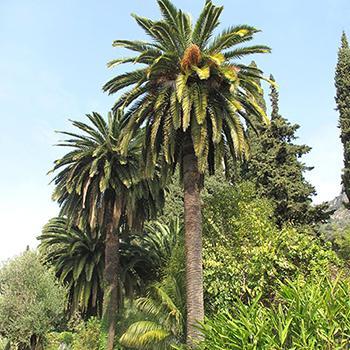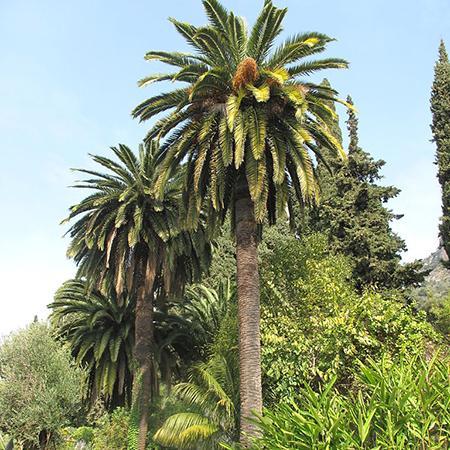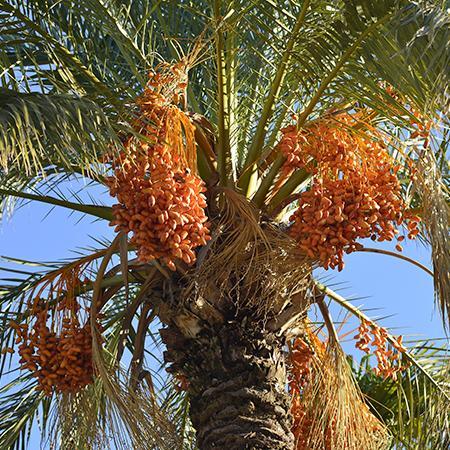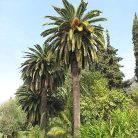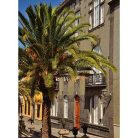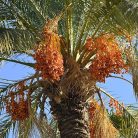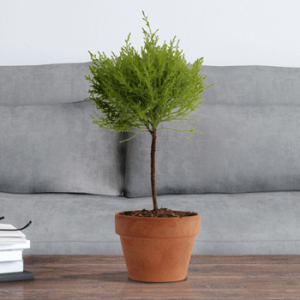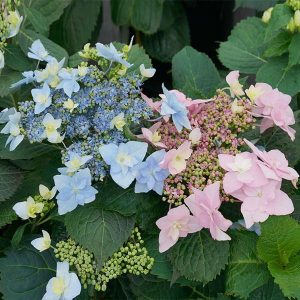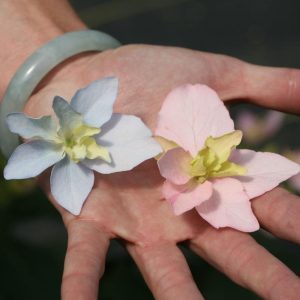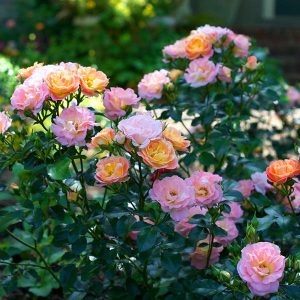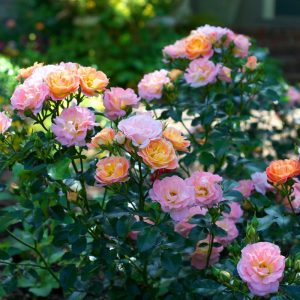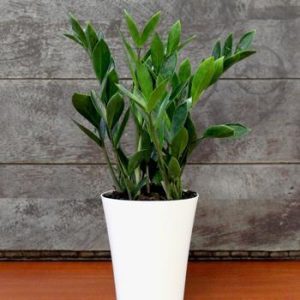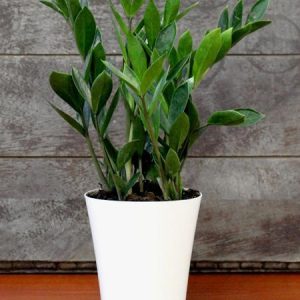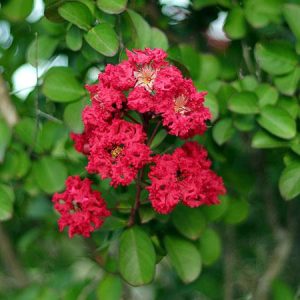Canary Island Date Palm Cheap
- Estimated Delivery : Up to 4 business days
- Free Shipping & Returns : On all orders over $200
Low maintenance, drought tolerant palm
The Canary Island Date Palm is the number one palm planted by hotels and resorts because their tropical beauty surprises and outshines other palm varieties.
This canary palm variety has a singular wide trunk that grows straight upwards with attractive grey bark. The bark has a textured pattern with a series of horizontal diamonds. The pattern resembles a pineapple’s skin, giving this tree its nickname, the ‘Pineapple Palm’.
At the top of each Canary Palm sits a large crown of long arching fronds that are covered with long leaf blades that fill the landscape with lush, tropical color. The color only intensifies when this palm has large clusters of orange flowers in the spring that turn into bright orange showy fruit in the fall.
This tall growing palm grows large enough to make a bold statement in your landscape. It will attract the eyes of all of your neighbors, and you’ll be able to see its vibrant colors from miles away, inviting you to relax in the tropical paradise it creates.
If you would like to keep a smaller palm, place your Canary Island Date Palm in a container. These palms love growing in pots, and can even be kept indoors. If you live above growing zone 8, place your palm tree in a pot and bring it indoors once the weather gets cold.
Canary Island Date Palms are often celebrated as one of most low maintenance palm varieties available. They are heat resistant and drought tolerant so they need little to no attention during hot summer days.
Planting & Care
The Canary Island Date Palm as a large crown of lengthy, arching, feathery fronds that sit at the top of the tree. These palms are the most commonly planted by hotels and resorts due to their beautiful, tropical appearance. This variety, known as “Phoenix Canariensis” performs best in USDA growing zones 4-8 on the patio (or potted) and 9-11 outdoors in full sun (they can tolerate some light shade). Date Palms are slow growers that mature to a height of 30-60 feet tall and 20-30 feet in width so be sure to take into account the tree’s mature height when scouting your planting site.
Location: Choose a location that receives FULL SUN (6+ hours daily) with well draining soil.
Planting Directions (in the ground):
1) Dig your hole 2-3 times the width and slightly shallower than the root ball.
2) Loosen the soil, in and around the hole so the roots can easily break through.
3) Use your fingers to separate the roots of your date palm and gently position downward in the hole. The top of the root flare (where the roots end and the trunk begins) should be about an inch above the surrounding soil.
4) Hold the tree straight as you begin to backfill the site, tamping down the soil as you go.
5) When finished, apply water to settle the soil and remove any air pockets.
Planting Directions (potted):
1) Choose a container that is 1-2 times larger than the pot that the plant initially arrived in.
2) Use a quality acidic potting medium such as a palm or citrus mix.
3) Partially fill the container part way, position the palm and fill the remainder leaving a slight space from the rim of the pot.
4) Choose a location on the patio, backyard, or front side of the house providing it will receive full to partial sun.
5) Water until it begins to flow through the bottom drainage holes, keep the soil slightly moist but not saturated.
6) If bringing indoors during the winter, keep by a sunny window and water as needed. Avoid exposure to both drafts and heat from a window or vent.
Watering (in the ground): Palm trees are drought tolerant once established, but will require frequent watering as they establish. Allowing the soil to dry out will weaken the root system of the palm tree. Only allow the soil to dry 1-2 inches down before watering again. The frequency will depend on the climate and how much rain you receiving.
Watering (potted): Stick you finger into the potting soil down to a depth of 2 inches and feel around for any moisture. If the soil is drying out, go ahead and water until you see it escaping the drainage holes and then stop. If there is still moisture present, leave it be until it dries a bit more.
Pruning: Palms do not need much pruning except to remove damaged fronds. Be careful not to pull off any dead or damaged fronds as that can leave a wound behind. Always remove any damaged fronds by pruning them off with a sharp pair of sterilized pruners.
Mulch: To help enrich the soil and reduce growth competition from weeds, apply a heavy mulch around the trunk, using wood chips, cypress bark or lawn clippings. This will also help to reduce water consumption. Avoid letting the mulch touch the trunk as this can promote rot and or fungus.
Fertilizing: Nutrients are vital for palm trees to thrive. The sandy, well draining soils they prefer have a tendency for nutrients to leach away quickly. You can apply palm fertilizers that contain specific nutrients best suited for palms. The slow release of these nutrients will provide consistent, targeted feeding to help your tree grow strong and healthy. If you prefer, you can use a balanced fertilizer such as an 8-8-8 formula for quicker growth in spring and summer. To avoid yellowing and maintain a healthy shade of green coloring, feed your tree a few spoons full of Epsom salt or a fertilizer that contains nutrients like manganese which will prevent the yellowing and shriveling of the fronds.
| Size | 3 Gallon, 2-3 ft., 3-4 ft., 4-5 ft. |
|---|
